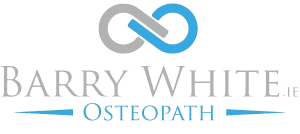What is Osteopathy?
Osteopathy is a primary care profession, focusing on the diagnosis, treatment, prevention and rehabilitation of musculoskeletal disorders, and the effects of these conditions on patients’ general health. Using many of the diagnostic procedures applied in conventional medical assessment, osteopaths seek to restore the optimal functioning of the body, where possible without the use of drugs or surgery. Osteopathy is based on the principle that the body has the ability to heal, and osteopathic care focuses on strengthening the musculoskeletal systems to treat existing conditions and to prevent illness. Osteopaths’ patient-centred approach to health and well-being means they consider symptoms in the context of the patient’s full medical history, as well as their lifestyle and personal circumstances. This holistic approach ensures that all treatment is tailored to the individual patient.
Pain Relief
Reduce stiffness/discomfort in muscles and joints.
Improved Mobility
Restore range of motion and functional movement.
Prevention
Guidance and advice to help prevent future injuries.
Holistic Approach
Treat the body as a whole, not just the symptoms.
Invest in Yourself
Take Control of Your Body and Your Health.
Experience relief from pain and improve your quality of life with personalised osteopathic care. You don’t have to live with discomfort.
Recovery and wellbeing start here.
How Osteopathy Can Help
Identify and Treat the Root Cause
We focus on uncovering the underlying cause of your pain and preventing it from recurring through hands-on treatment and targeted rehabilitation.
Restore Mobility and Function
Regain ease of movement with techniques designed to increase flexibility, reduce tension, and support natural alignment.
Support Through Life’s Changes
Whether you’re recovering from injury, adapting to lifestyle changes, or managing chronic pain, we provide a holistic, patient-centred approach tailored to your needs.
